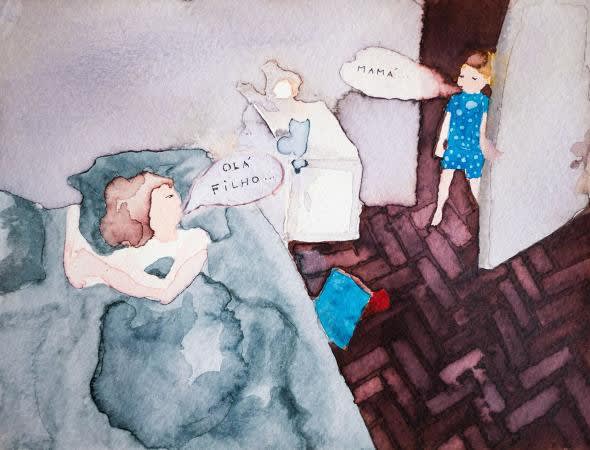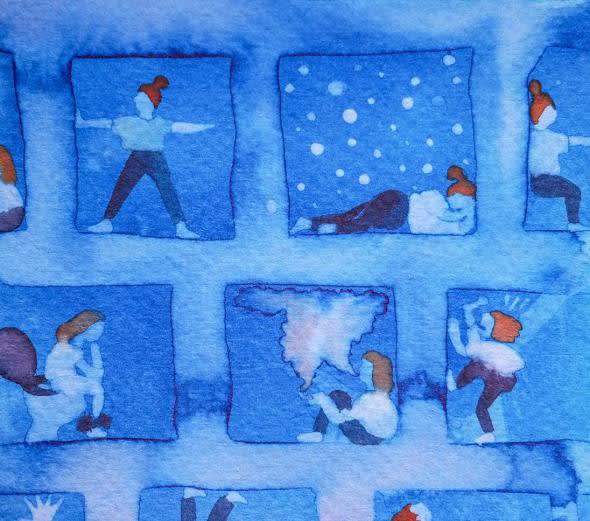VIVEIRO | Júlia Barata: Illustration Exhibition
Júlia Barata | VIVEIRO
Illustration Exhibition
[...] This idea of VIVEIRO (Nursery), a kind of cocoon where an enclosed pandemic life would take place and far from extended social contacts, puts in to contrast only the apparent images of the paintings and the ideas that pass from them with the idea of rhizome, this multi-centered place-entity-object, because if on the one hand the images kind of translate precisely that idea of closure in and of the symbiotic relationship between mother and child, almost constituting a single living unit in its extension, a kind of holobiont (if they were different species), on the other hand there exists in her work very harsh criticism of the unidimensional and linear idea of woman and mother, one that says that her unique focal point may only be the family, that is, an idea that is the opposite of the multi-centered rhizome. Furthermore - and because for me the holobiont is infinitely more interesting than the rhizome, at least for now, because the holobiont carries the whole idea of an ecosystem of relationships that are triggered for the creation of life, the idea of sympoiesis, the making with, which came to me courtesy of Donna Haraway ft. Lynn Margulis, the queen of mud and organisms, who concludes the “natural” theories of competition with one, We are all consortia, nobody is alone. [...]
[...] Esta ideia de VIVEIRO, uma espécie de cocoon-casulo onde decorreria uma vida pandémica encerrada e longe de contatos sociais alargados, coloca em contraste apenas aparentemente as imagens das pinturas e das ideias que delas passam com a ideia de rizoma, este lugar-entidade-objecto multi-centrado, porque se por um lado as imagens meio que traduzem precisamente essa ideia de fechamento na e da relação simbiótica entre mãe e filho, quasi-constituintes de uma única unidade viva na sua extensão, uma espécie de holobionte (se se tratassem de espécies diferentes), por outro lado há toda uma crítica fortíssima nas suas obras a uma ideia unidimensional e linear de mulher e de mãe, aquela que diz que o seu único centro pode ser apenas a família, ou seja, aquela que é o contrário do rizoma, multi-centrado. E também – e porque para mim o holobionte é infinitamente mais interessante do que o rizoma, pelo menos por agora, porque o holobionte carrega toda a ideia de um ecossistema de relações que são acionadas para a criação de vida, a ideia de simpoiésis, o making with, que chegou até mim courtesy da Donna Haraway ft. Lynn Margulis, a rainha da lama e dos organismos, que remata as teorias «naturais» da competição com um, We are all consortia, ninguém é sozinho. [...]




